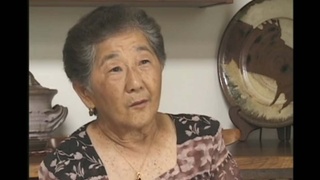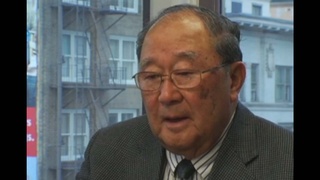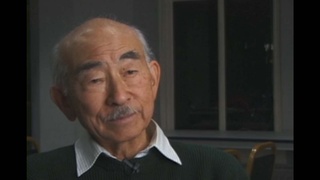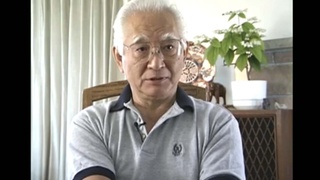Interviews
December 7th, 1941
I guess I was eight, and my uncle, who just graduated high school, was courting my aunt-to-be. They were still boyfriend and girlfriend. So one Sunday my uncle said, “Hey, I’ll look after Junior. We’ll go down to Santa Cruz.” Because Santa Cruz had a boardwalk with the rides. The roller coasters and all that. So it was a good Sunday drive from San Francisco.
And then, around lunch time, they spread out the blanket and we had our lunch. The usual, onigiri and all that good stuff. And then around 3 o’clock in the afternoon, the fog started rolling in. so we said, “It’s getting a little cold. Let’s wrap up and head back to the city.” So we jumped in the car and started heading back to San Francisco and heading back to the bay shore.
As we got to the city limits, MPs were stationed there. And they were stopping all the cars. And so they came and checked my uncle’s ID and said, “Okay, go on ahead.” We weren’t quite sure what the heck was going on, why MP. As we got into the city, we saw the news kids on the corner. “War, war! Extra, extra. War!”
So when we got home, my mother was in a panic. Remember, that was days before cell phones, so she didn’t know how to get in touch with us. And when the word hit the Japanese community about Pearl Harbor, all hell was breaking loose. All the neighbors were in a panic. My grandparents were over the house. Whatever. And I said, “War? What does war mean?” Well, I soon found out.
Date: August 26, 2015
Location: California, US
Interviewer: John Esaki
Contributed by: Watase Media Arts Center, Japanese American National Museum
Explore More Videos

Importance of education in achieving redress for incarceration
(1919-2014) Activist for civil rights and redress for World War II incarceration of Japanese Americans.

Her experience as a Japanese-American schoolchild in Oceanside, California, after the bombing of Pearl Harbor
(1924-2018) Artist and playwright.

Loss of happy-go-lucky adolescence in Puyallup Assembly Center
(b. 1923) Nisei from Washington. Resisted draft during WWII.

Memories of dusty conditions at Minidoka incarceration camp
(b. 1923) Nisei from Washington. Resisted draft during WWII.

Making the decision to resist the draft
(b. 1923) Nisei from Washington. Resisted draft during WWII.

Discharged from the U.S. Army after Pearl Harbor
(b. 1918) Founder Azumano Travel

Reaction to a 1942 speech by Mike Masaoka, Japanese American Citizen League's National Secretary
(1915 - 2011) Nisei florist who resettled in New York City after WW II. Active in Japanese American civil rights movement

Death of sister in October 1942
(1915 - 2011) Nisei florist who resettled in New York City after WW II. Active in Japanese American civil rights movement

First impression of New York City during war time
(1915 - 2011) Nisei florist who resettled in New York City after WW II. Active in Japanese American civil rights movement

Neighbors' sympathy after Pearl Harbor
(1915 - 2011) Nisei florist who resettled in New York City after WW II. Active in Japanese American civil rights movement

Reaction of Japanese American community toward draft resistance stance
(b. 1925) Draft resister

The role of the media in influencing people's opinions
(b. 1925) Draft resister

Living conditions in prison while serving time for resisting the draft
(b. 1925) Draft resister

Talking to children about decision to resist the draft during World War II
(b. 1925) Draft resister

Deciding whether to answer "yes-yes" on the loyalty questionnaire in order to leave camp
(b. 1925) Draft resister
